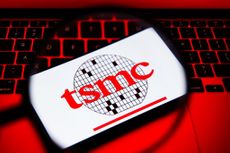Best Ways to Raid Your Nest Egg
When you have to tap your retirement accounts early, the key is to minimize taxes.

The problem: your savings are tied up in retirement accounts, but you really need the money -- now. You know you shouldn't crack your nest egg until it's time to retire, but these are extraordinary times. Maybe your rainy-day fund has dried up, your credit-card rate has soared, or your home-equity line of credit has been yanked.
Borrow from your 401(k). If you are still working, you may be able to borrow up to half of the balance of your 401(k) or similar employer-based retirement savings account, to a maximum of $50,000. (The majority of 401(k) plans allow loans, but specific rules are determined by the plan sponsor.)
On the plus side, interest rates on 401(k) loans tend to be lower than you will find elsewhere. Because you are borrowing from yourself, your credit score doesn't matter and your loan repayments plus interest go back into your account.

Sign up for Kiplinger’s Free E-Newsletters
Profit and prosper with the best of expert advice on investing, taxes, retirement, personal finance and more - straight to your e-mail.
Profit and prosper with the best of expert advice - straight to your e-mail.
Normally, you have up to five years to repay your loan (longer if the money is used as a down payment on a primary home). But if you fail to pay it back on time, the unpaid balance will be treated as an early distribution and will be subject to taxes and the 10% early-withdrawal penalty if you're younger than 59 1/2. If you lose or leave your job, your loan payoff is usually due within 60 to 90 days -- at a time when you may least be able to repay it. So don't borrow from your retirement plan unless your job is secure.
Borrowing from your 401(k) is a much better alternative than requesting a hardship withdrawal, which is generally reserved for dire financial situations, such as preventing foreclosure. Hardship withdrawals are treated as early distributions and are subject to taxes and penalties. So, for example, if you're in the 25% federal income-tax bracket, your state tax rate is 5% and you are younger than 59 1/2, you could lose 40% of your 401(k) distribution to taxes and penalties. Once you take a hardship withdrawal, you can't put it back, so the size of your nest egg is permanently reduced. And the law prohibits you from making new contributions to your account for at least six months following a hardship withdrawal.
Dodge the early-out penalty. If you are 55 or older and you leave your job, whether by choice, because you've been laid off or you've decided to retire early, you can take withdrawals from your 401(k), 403(b) or federal Thrift Savings Plan penalty-free. (You'll still have to pay income taxes on any distributions.) If you are a state- or local-government employee with a 457 plan, you can withdraw your savings after you leave your job penalty-free, regardless of your age.
If, however, you roll over your retirement funds to an IRA, you lose the early-out option. Normally you pay a 10% early-withdrawal penalty, in addition to income taxes, when you withdraw funds from a traditional IRA before you turn 59 1/2. And you can't borrow from your IRA.
Nevertheless, you can tap an IRA early. You won't be hit with the 10% penalty if you use your IRA withdrawal to pay for college expenses for you, your spouse or a dependent, or to help you purchase your first home (up to a maximum withdrawal of $10,000). The penalty is also waived if you become disabled; if you use the money to pay medical expenses in excess of 7.5% of your adjusted gross income; or, under certain conditions, if you are unemployed and use the money to pay for health-insurance premiums.
What's more, there's another way to stay clear of the 10% early-withdrawal penalty, regardless of how you spend the money. You can take a series of "substantially equal periodic payments," based on your life expectancy, for at least five years or at least until you are 59 1/2 years old -- whichever is longer. You can even split off a part of your IRA and take distributions based on that one account, reducing the amount you can access each year but protecting the remainder of your nest egg.
This strategy, known as a 72(t) distribution, works best if you're in your fifties and can commit to steady distributions for five years or longer. Once you choose a payout method, you must stick with it. The penalty for deviating from a 72(t) schedule is steep: You'll pay the 10% penalty retroactive to your first withdrawal, plus interest.
You can choose among three methods for calculating the distribution, so select whichever one works best for you. Based on the 3.37% interest rate in effect for September 2009 (the IRS publishes rates monthly), a 52-year-old man with a $400,000 IRA would be required to take distributions of about $12,400 a year initially under the minimum-distribution method. This is the only method in which your payout will change if your account balance fluctuates. Under the alternative annuity and amortization methods, he would receive about $20,400 and $20,500 a year, respectively. Get your own estimate using the free calculators at www.401kplanning.org. Another site, www.72t.net, offers a reverse calculator to determine how much of an initial balance you would need to produce your desired payout. That can be useful if you want to split off part of your IRA and tap just that portion early.
With current interest rates so low, 72(t) distributions are smaller than they were even two years ago, when rates were closer to 6%. "A lot of people would like to retire early, but the low payouts don't meet their income needs," says J. Graydon Coghlan, president of Coghlan Financial Group, in San Diego. And the 72(t) interest rate is a one-time calculation, so the rate that's in effect when you begin your distribution is the one you use for the entire payout.
Tap a Roth IRA. Because there are no upfront tax breaks when you contribute to a Roth IRA, you can withdraw your contributions (but not earnings) tax-free and penalty-free at any time. That makes Roth IRA money the easiest to access in hard times.
But think twice before cashing in a Roth IRA, which is considered the holy grail of savings vehicles. Contributions and earnings grow tax-free inside a Roth IRA, and all distributions are tax-free and penalty-free once you are 59 1/2 and the account has been open at least five years. The longer you allow the assets to grow, the bigger your pile of tax-free assets will be.
Roth IRAs offer estate-planning advantages over traditional IRAs, too. They have no minimum-distribution requirements and you can continue to contribute, regardless of age, as long as you have earned income from a job. That means if you don't need the money, you can build a substantial legacy for your heirs. They'll also thank you for using a Roth: Beneficiaries pay no income taxes on inherited Roth IRAs.

-
 Buy eBay and Sell Etsy, Morgan Stanley Says
Buy eBay and Sell Etsy, Morgan Stanley SaysMorgan Stanley is bullish on eBay and bearish on Etsy. Here’s what you need to know.
By Joey Solitro Published
-
 Why Taiwan Semiconductor Stock Is Falling After Earnings
Why Taiwan Semiconductor Stock Is Falling After EarningsTaiwan Semiconductor beat expectations for the first quarter but its stock is notably lower. Here's why.
By Joey Solitro Published
-
 403(b) Contribution Limits for 2024
403(b) Contribution Limits for 2024retirement plans Teachers and nonprofit workers can contribute more to a 403(b) retirement plan in 2024 than they could in 2023.
By Jackie Stewart Published
-
 SEP IRA Contribution Limits for 2024
SEP IRA Contribution Limits for 2024SEP IRA A good option for small business owners, SEP IRAs allow individual annual contributions of as much as $69,000 a year.
By Jackie Stewart Published
-
 Roth IRA Contribution Limits for 2024
Roth IRA Contribution Limits for 2024Roth IRAs Roth IRA contribution limits have gone up for 2024. Here's what you need to know.
By Jackie Stewart Published
-
 SIMPLE IRA Contribution Limits for 2024
SIMPLE IRA Contribution Limits for 2024simple IRA The maximum amount workers at small businesses can contribute to a SIMPLE IRA increased by $500 for 2024.
By Jackie Stewart Published
-
 457 Contribution Limits for 2024
457 Contribution Limits for 2024retirement plans State and local government workers can contribute more to their 457 plans in 2024 than in 2023.
By Jackie Stewart Published
-
 Roth 401(k) Contribution Limits for 2024
Roth 401(k) Contribution Limits for 2024retirement plans The Roth 401(k) contribution limit for 2024 is increasing, and workers who are 50 and older can save even more.
By Jackie Stewart Published
-
 7 Things Medicare Doesn’t Cover
7 Things Medicare Doesn’t CoverHealthy Living on a Budget Medicare Part A and Part B leave some pretty significant gaps in your health-care coverage. But Medicare Advantage has problems, too.
By Donna LeValley Last updated
-
 Is a Medicare Advantage Plan Right for You?
Is a Medicare Advantage Plan Right for You?Medicare Advantage plans can provide additional benefits beneficiaries can't get through original Medicare for no or a low monthly premium. But there are downsides to this insurance too.
By Jackie Stewart Published